Big Block Series 2
In the late 1980’s Tudor replaced the 94300 series watches with the 79100 series...
Tudor 79160 with ‘Sloping Hours’ Dial with Raised Sub Dials
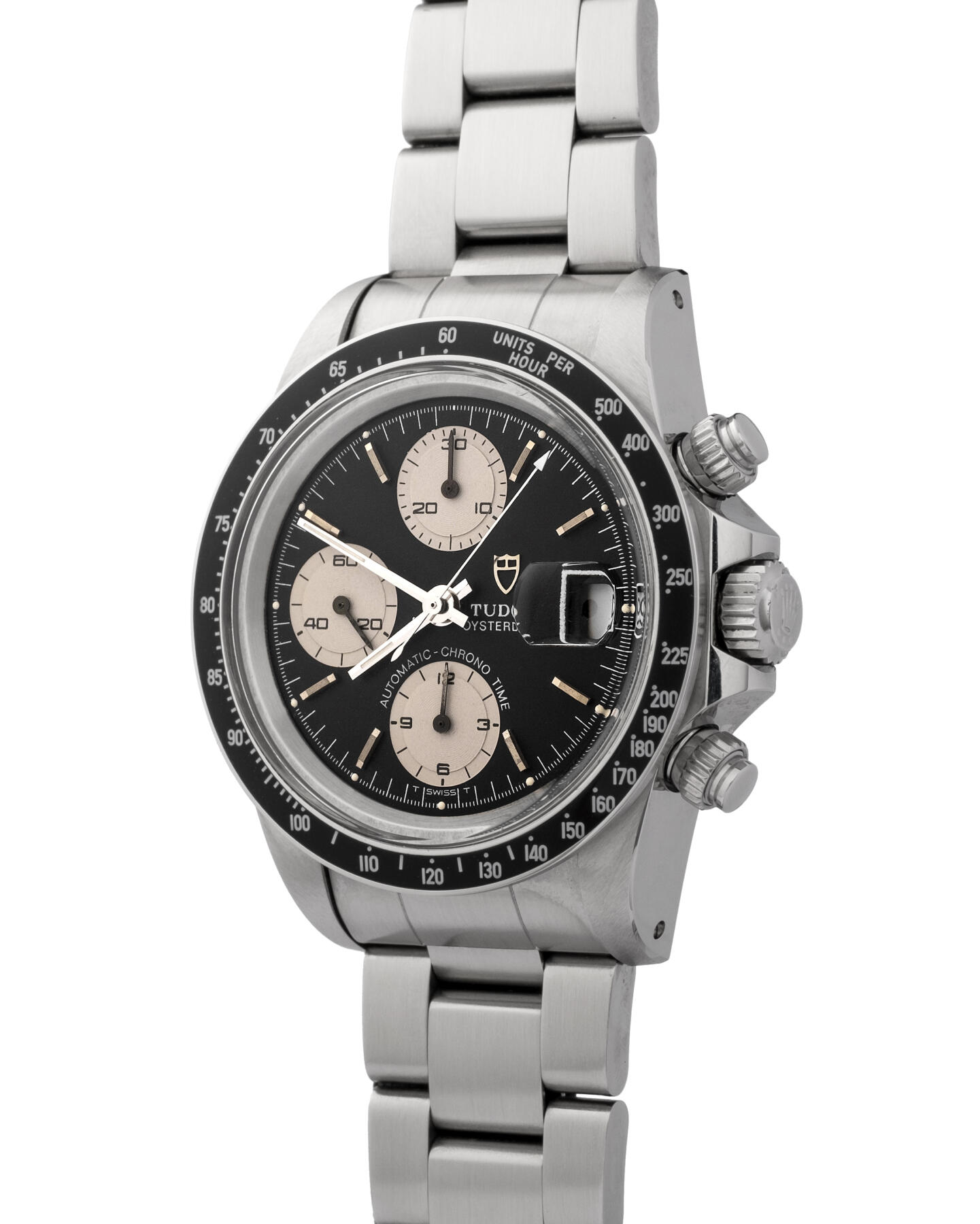
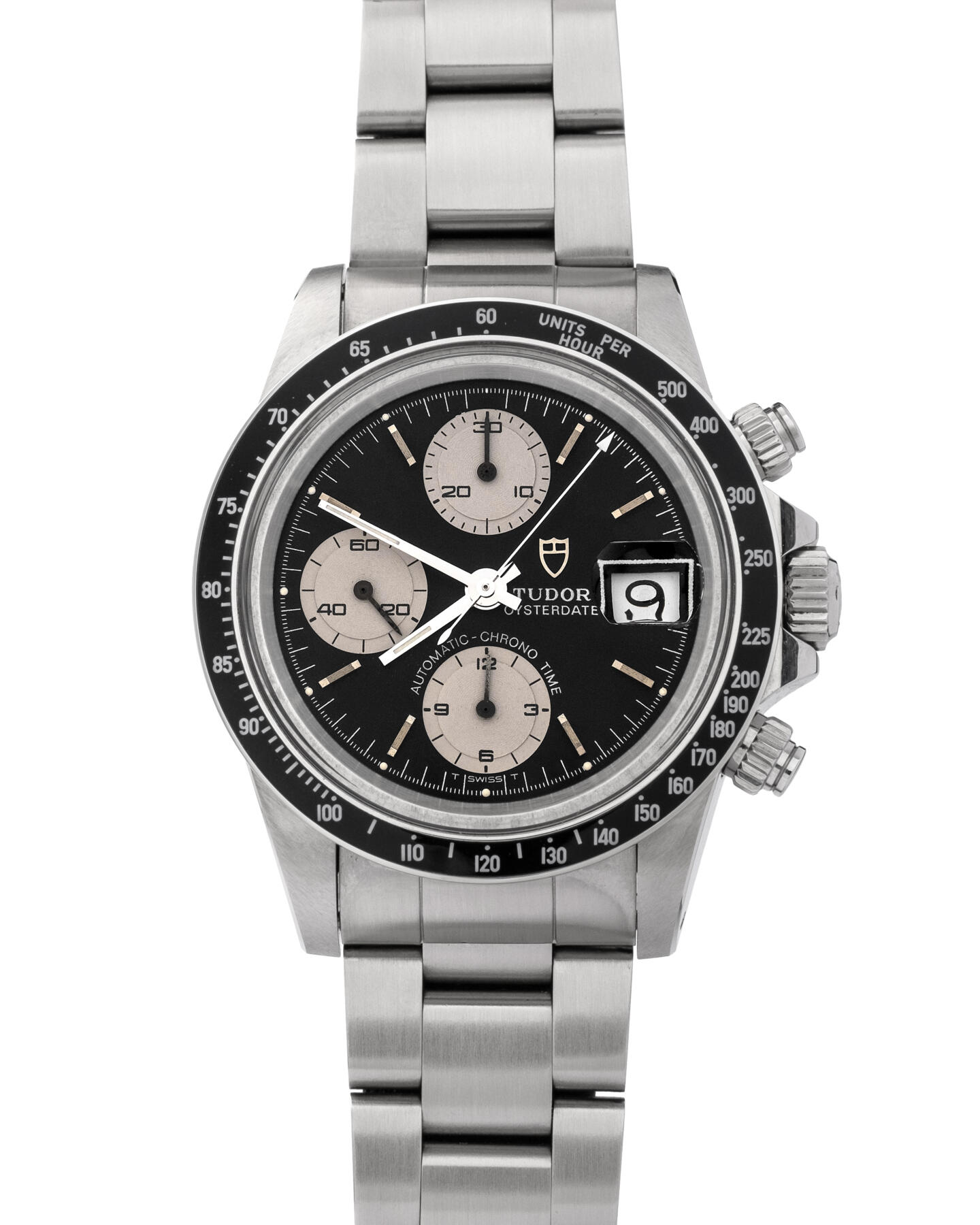

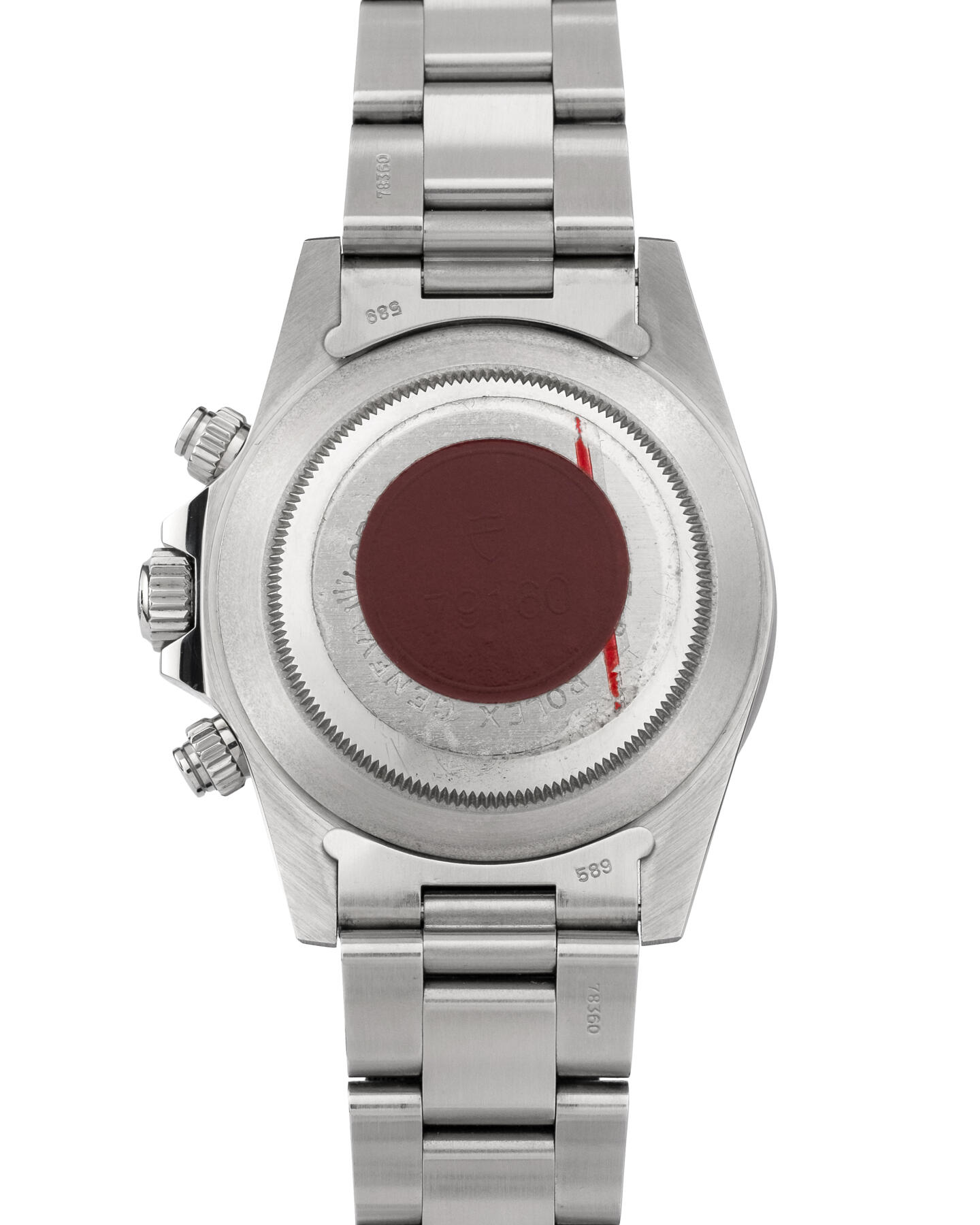

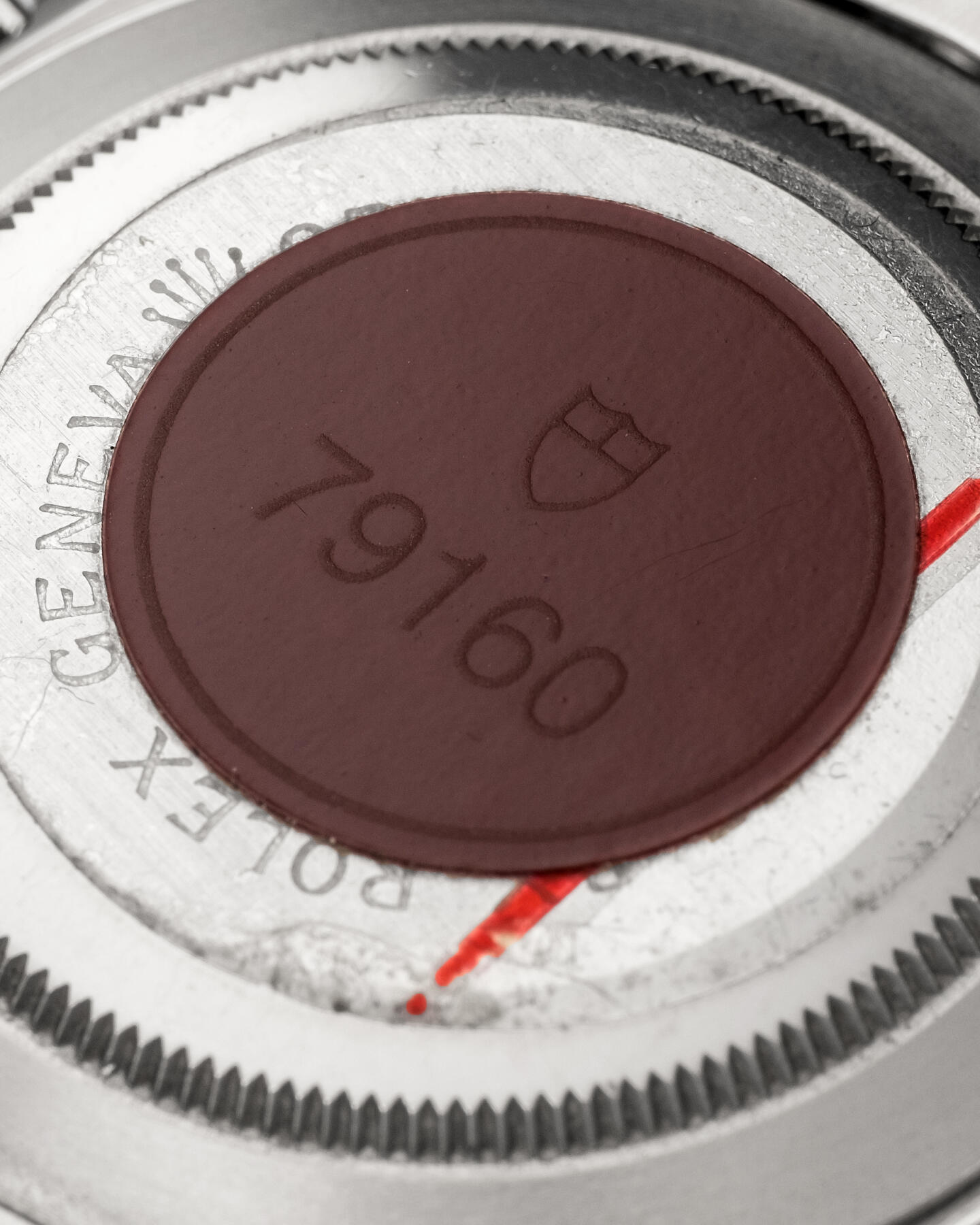
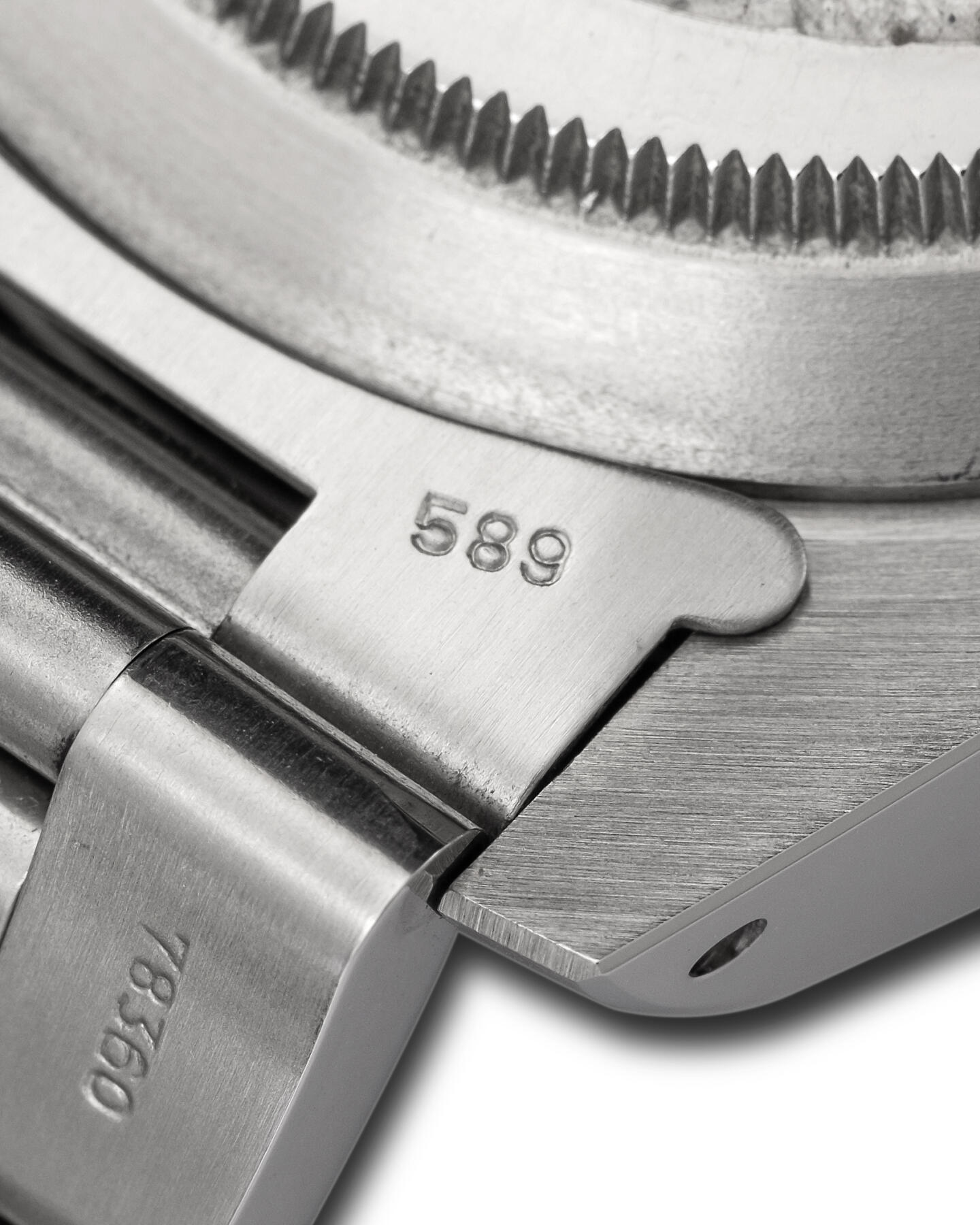
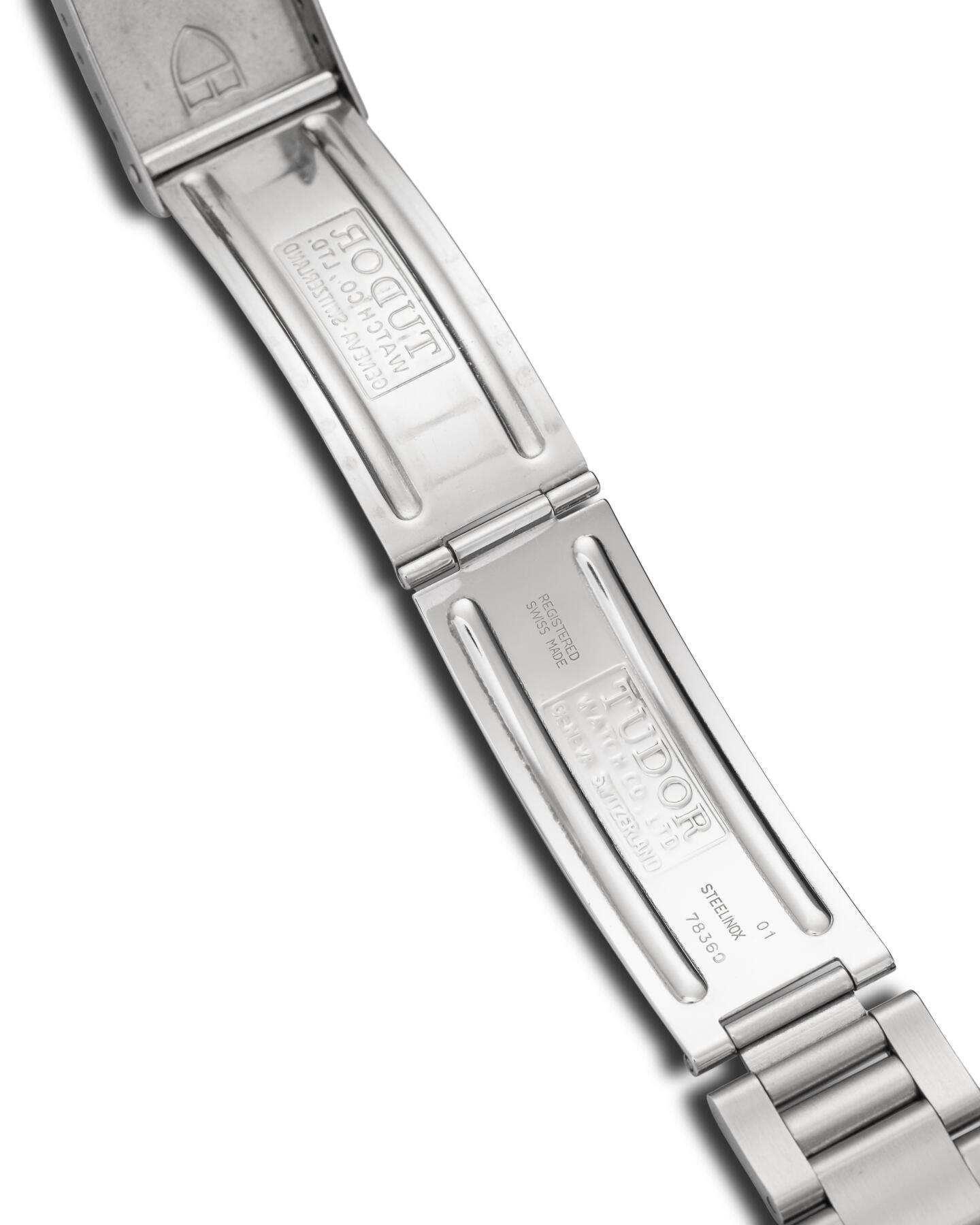
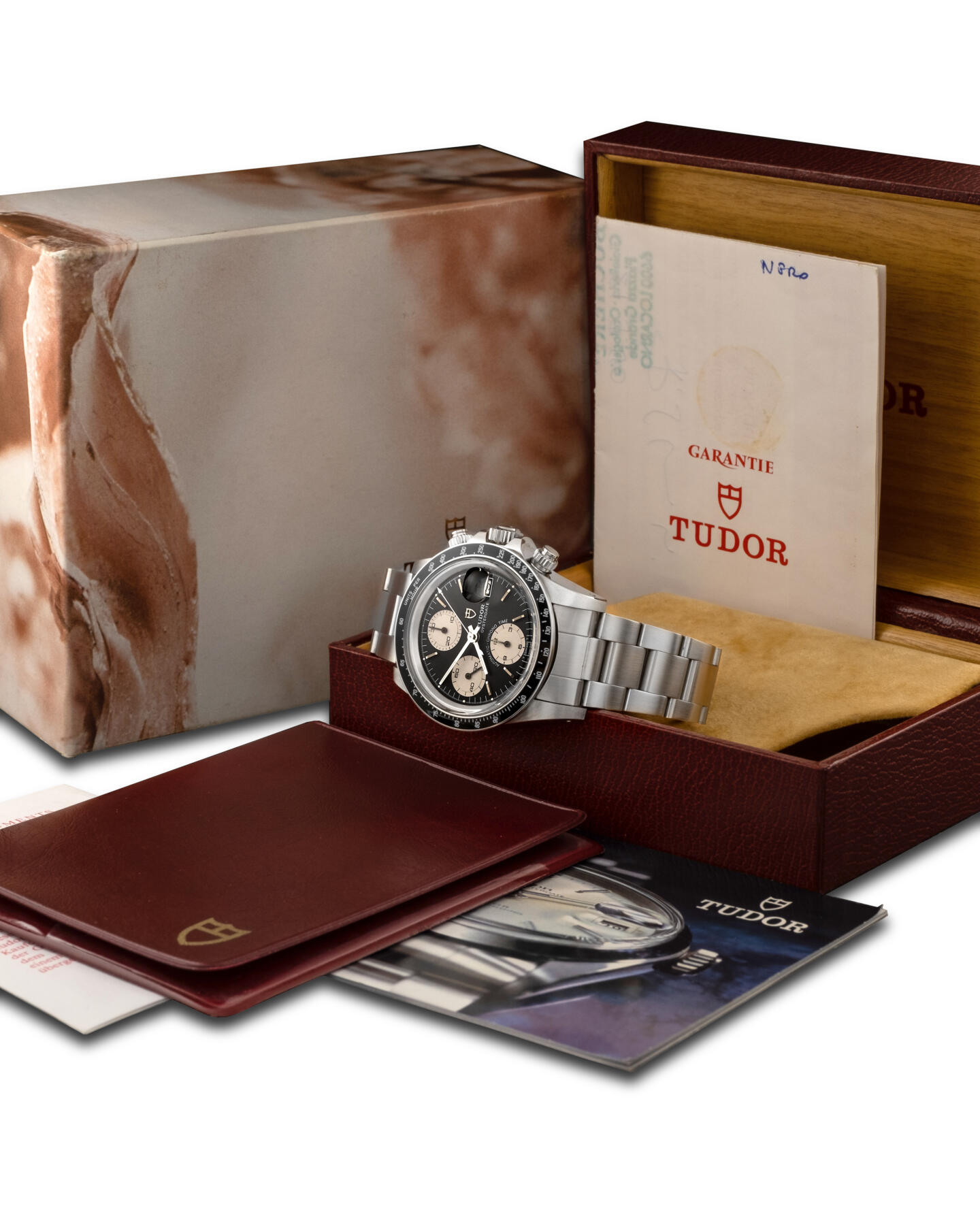
It’s important to remember that vintage Tudor watches utilized a great number of Rolex components, including winding crowns, chronograph pushers, bezels, bracelets and crystals. The introduction of the second series of Big Blocks retained the deep case, however these watches were only available with the two coulor, non-exotic dial configuration; very Daytona-esque in aesthetic. Like its Rolex cousin, the most commonly seen versions were either black with silver/white sub dials or the opposite way round. There was also a rare variant that was a silver dial with white subdials – the ‘albino’. These dials all featured applied metal hour markers, with beveled/sloping ends. On early versions, the date aperture had a painted window around it and the chrono registers had a raised inner section that gave the dial an almost two-dimensional quality.
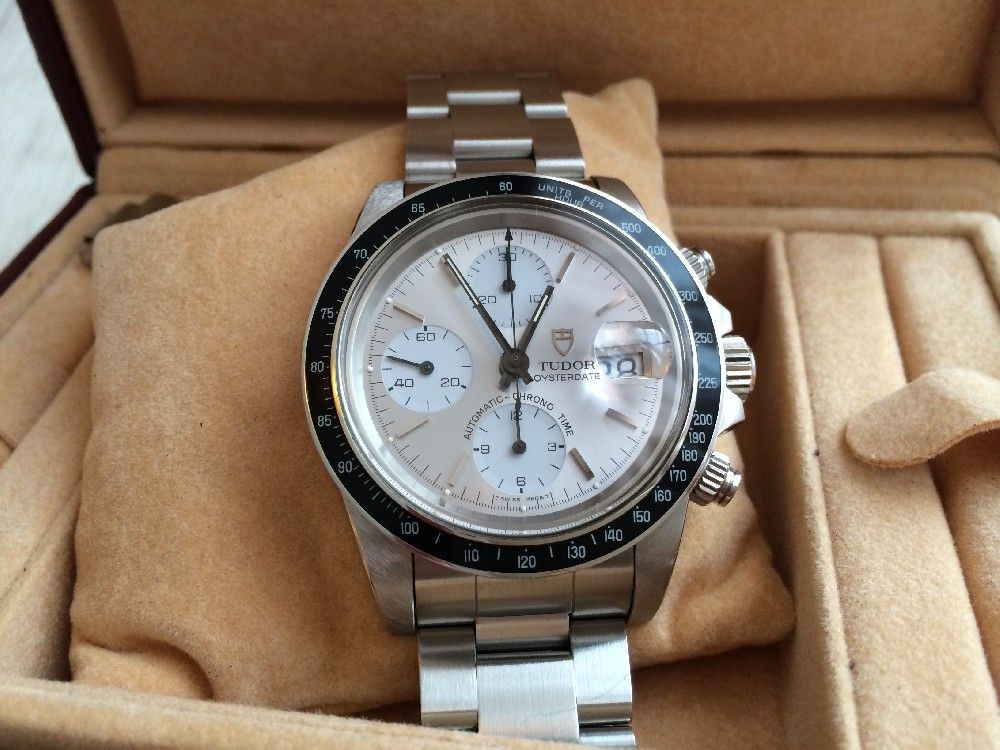
Tudor 'Albino' dial Big Block reference 79160
Three Model References
As with the 9400 series, there were three references which were all differentiated by their bezel type:
79160 – Black plastic tachymeter bezel
79170 – Black graduated 12 hour bi-directional bezel
79180 – Steel tachymeter bezel

79160 silver dial with black plastic tachymeter bezel
| Photo | Bulang and Sons |
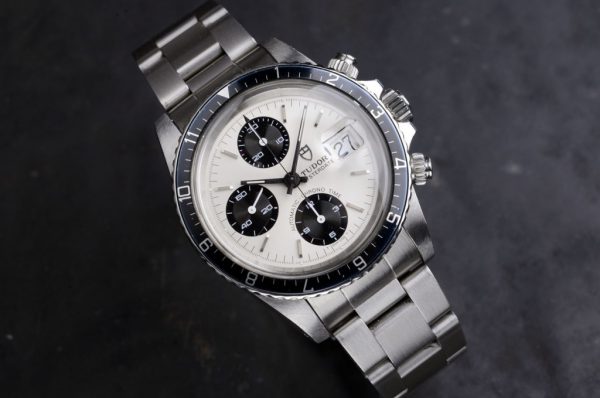
79170 silver dial with black graduated 12 hour bi-directional bezel
| Photo | Bulang and Sons |
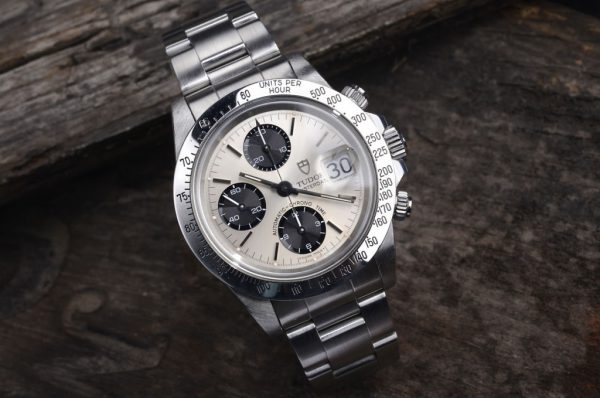
79180 silver dial with fixed steel tachymeter bezel
| Photo | Bulang and Sons |
Early Dial Type
The first series of 79000 series Big Blocks can be identified by two key characteristics. The first is the hour markers. which have sloping, bevelled ends. The second attribte worthy of note is that the date aperture has a window painted around it.
Additionally, the very earliest dials had a raised section in the centre of the sub dials.
Tudor 79170 with ‘Sloping Hours’ and Flat Sub Dials
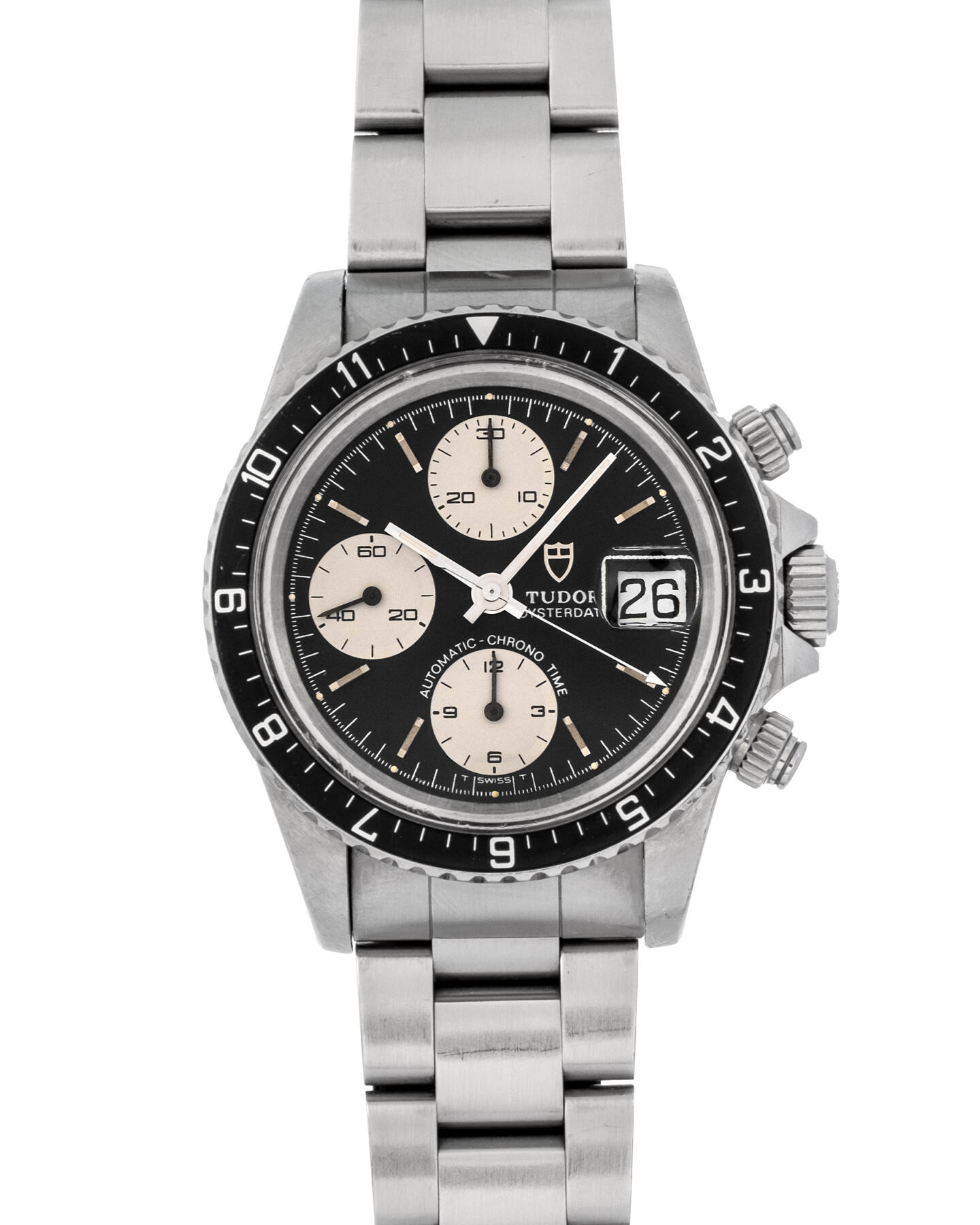

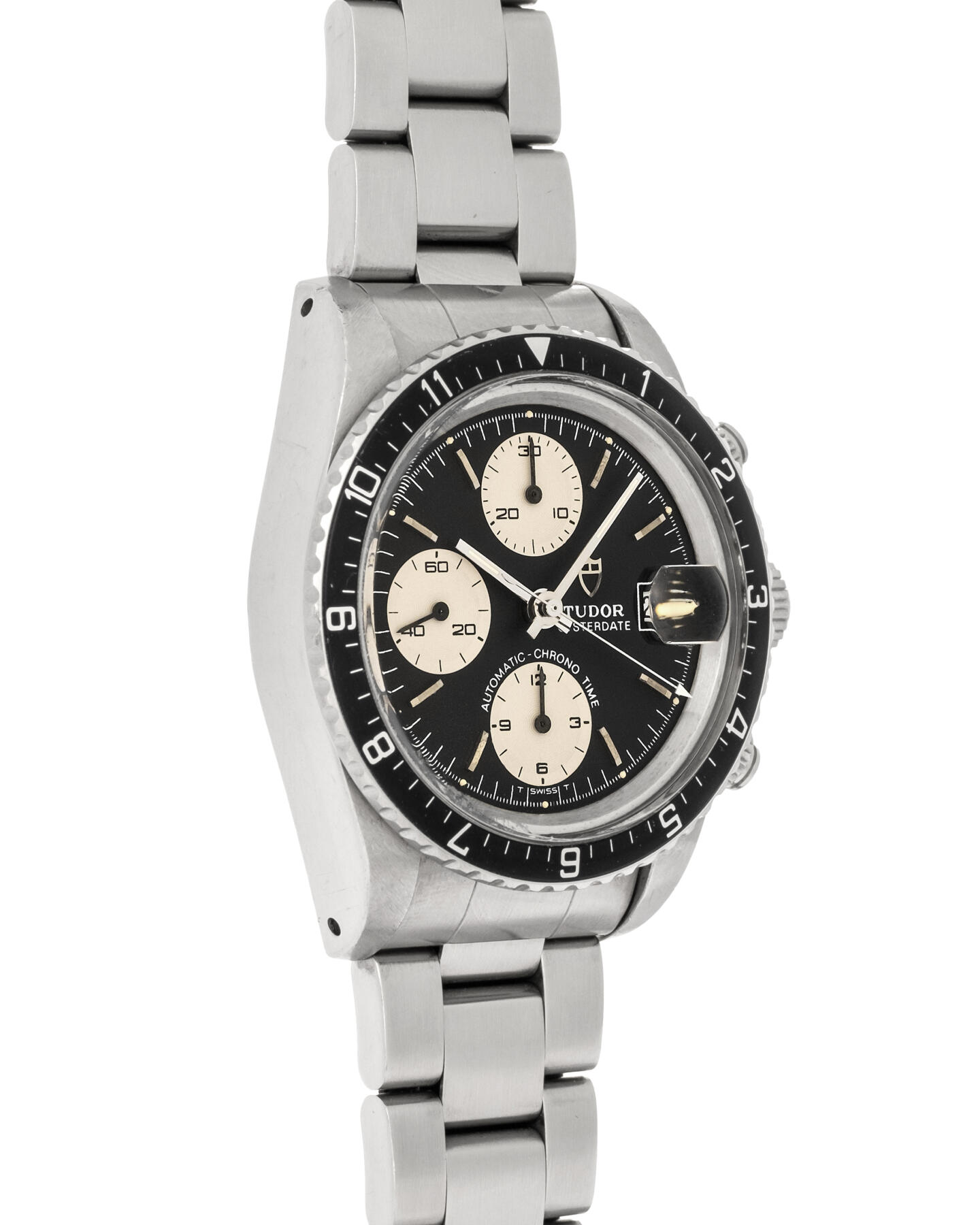
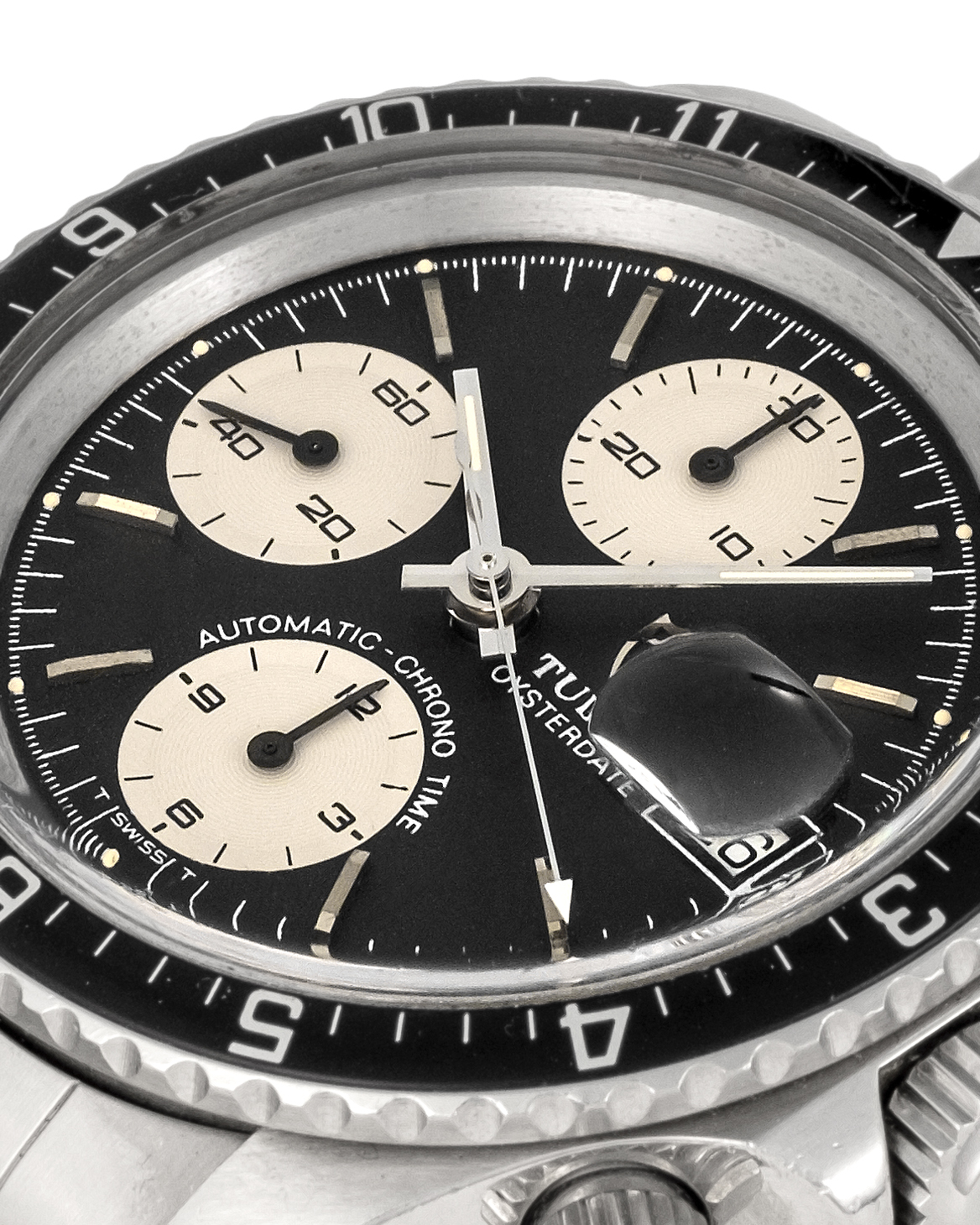

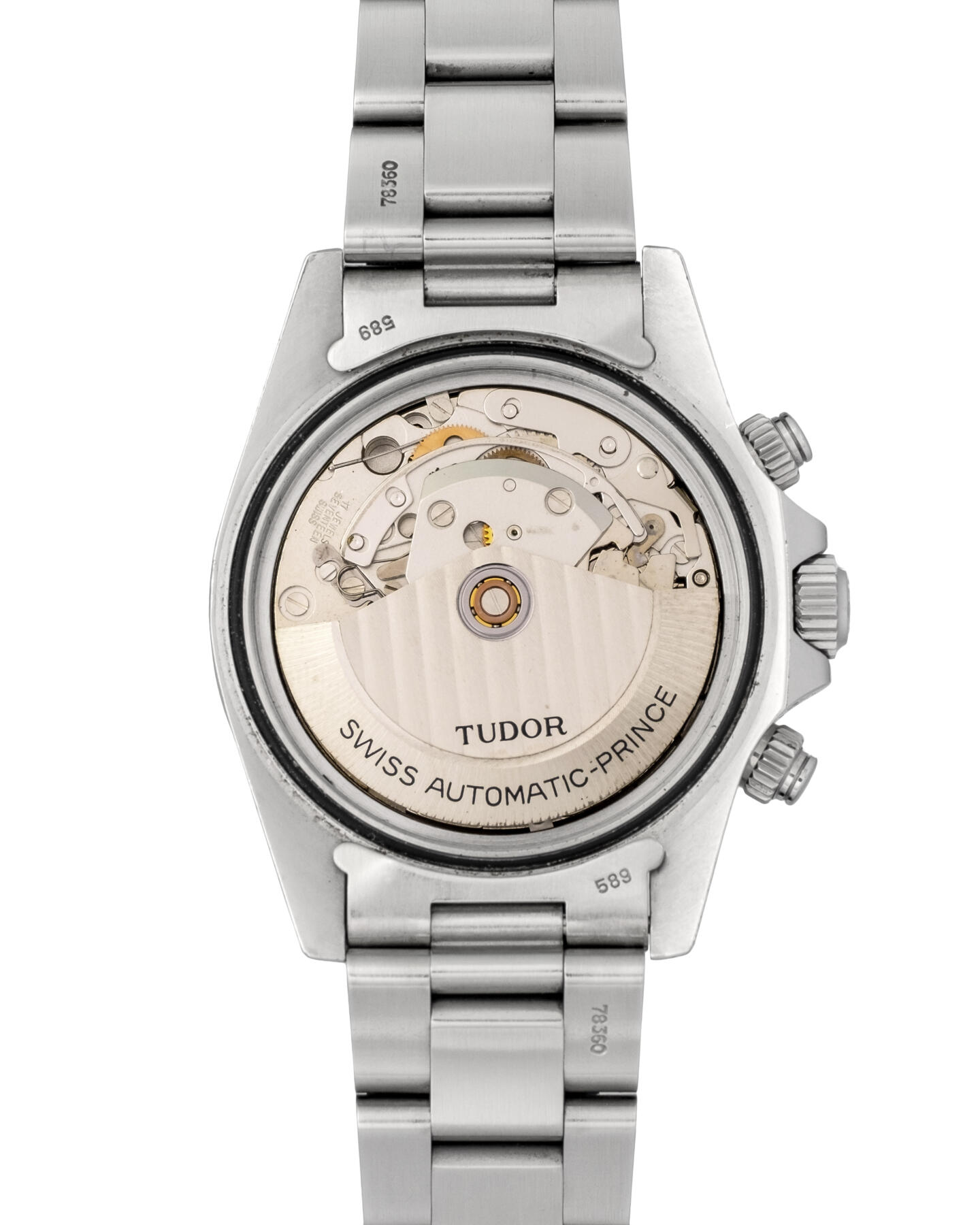
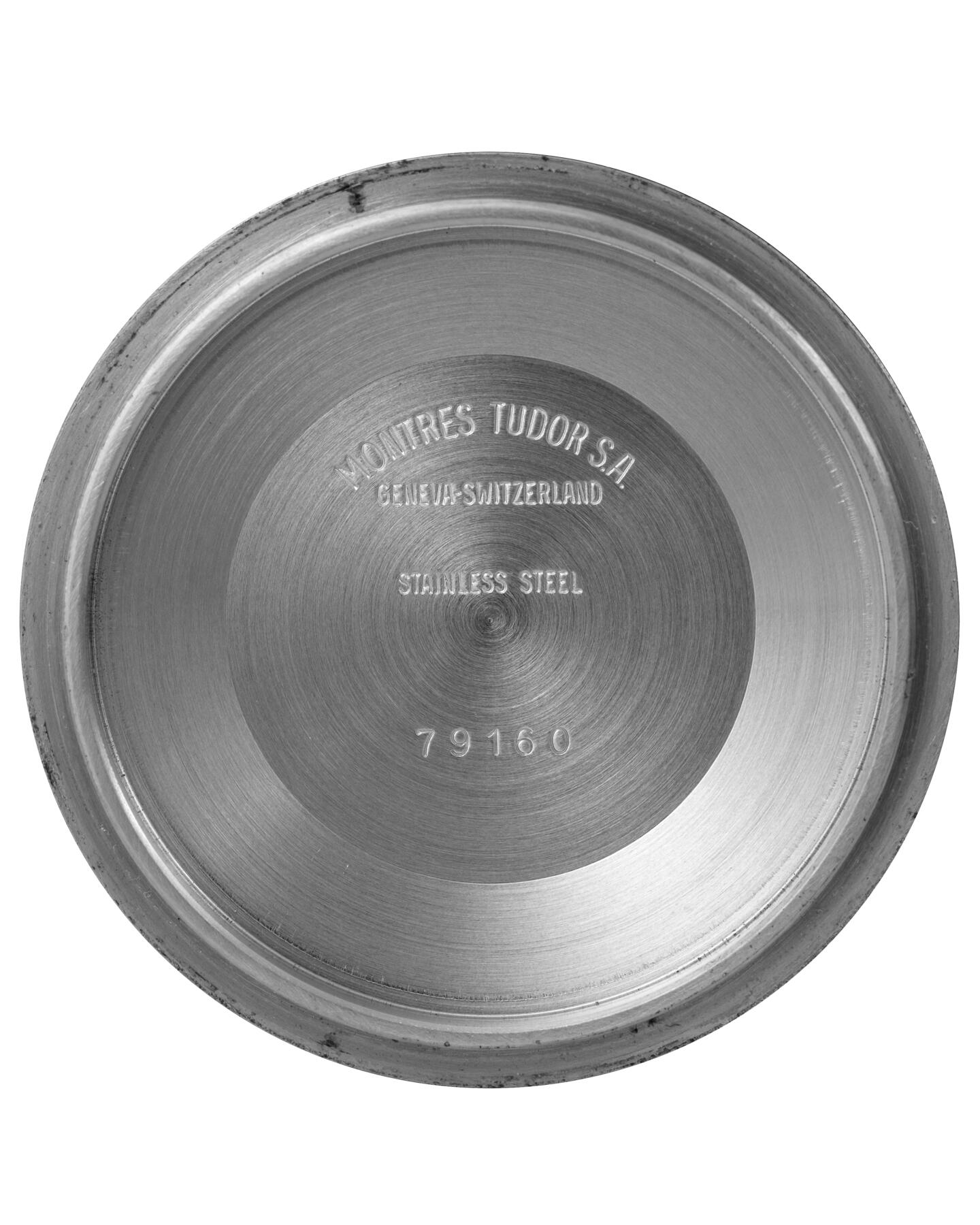
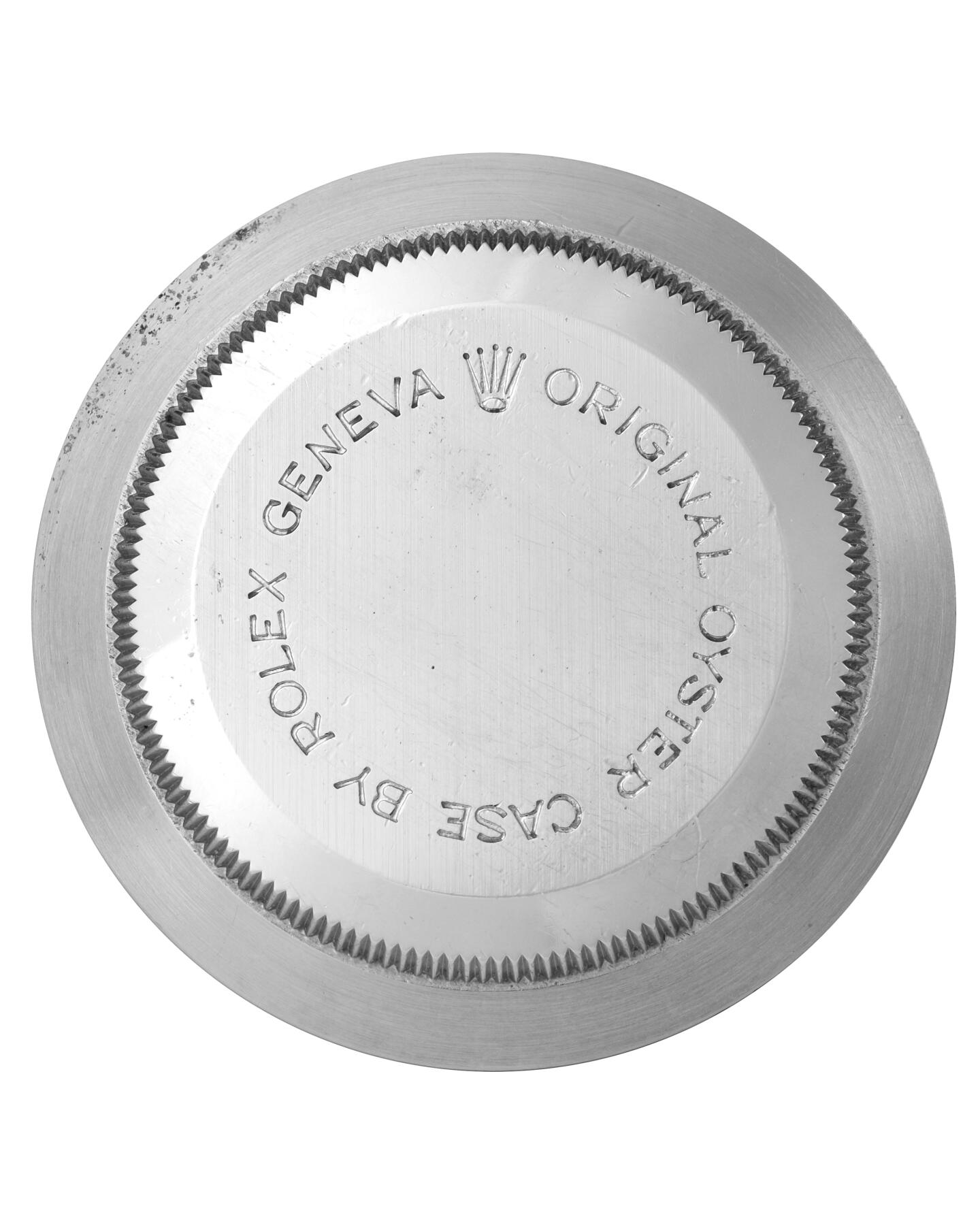
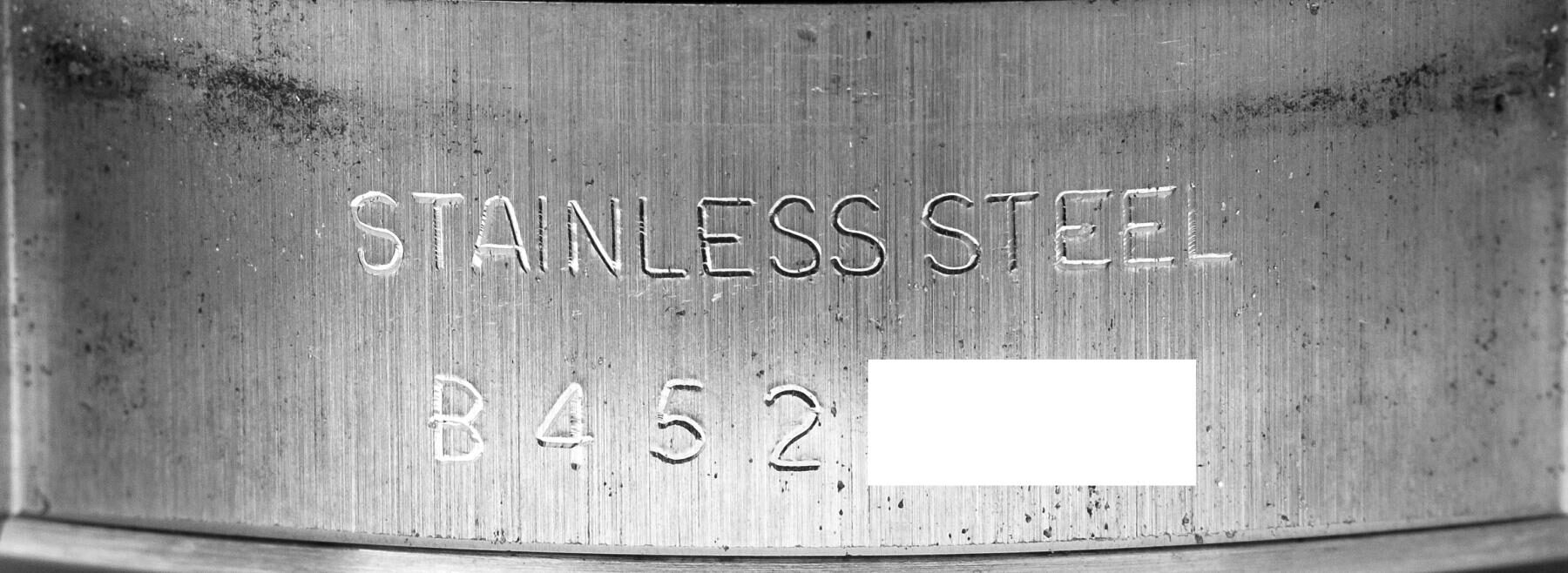
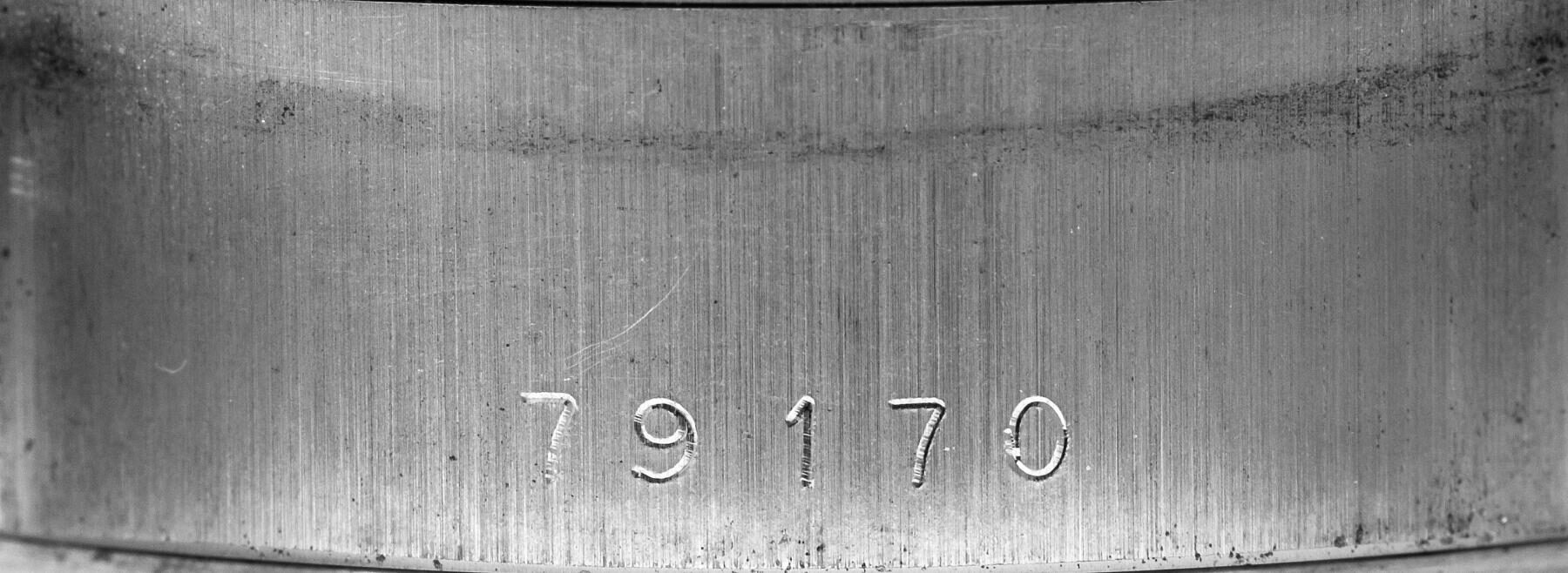
Second Dial Type
By the time the 79100 Big Block series was released the dials all featured ‘Oysterdate’ under the date window and ‘Automatic – Chrono Time’ above the bottom chronograph register. Later 79100 series dials had straight (non-sloping) applied hour markers and the painted window around the date aperture disappeared.
Tudor 79160 with Later ‘Flat Hours’ Dial Type
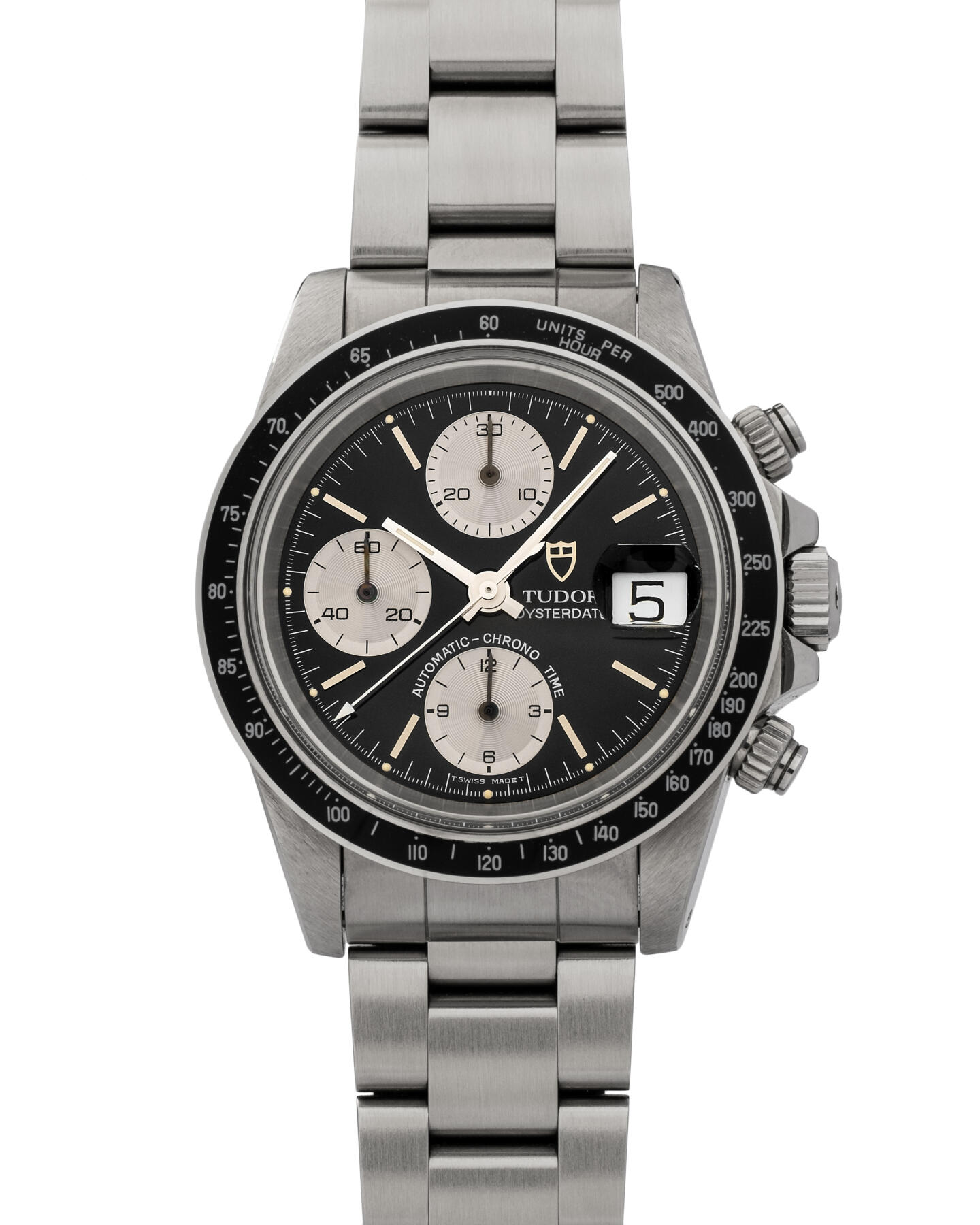
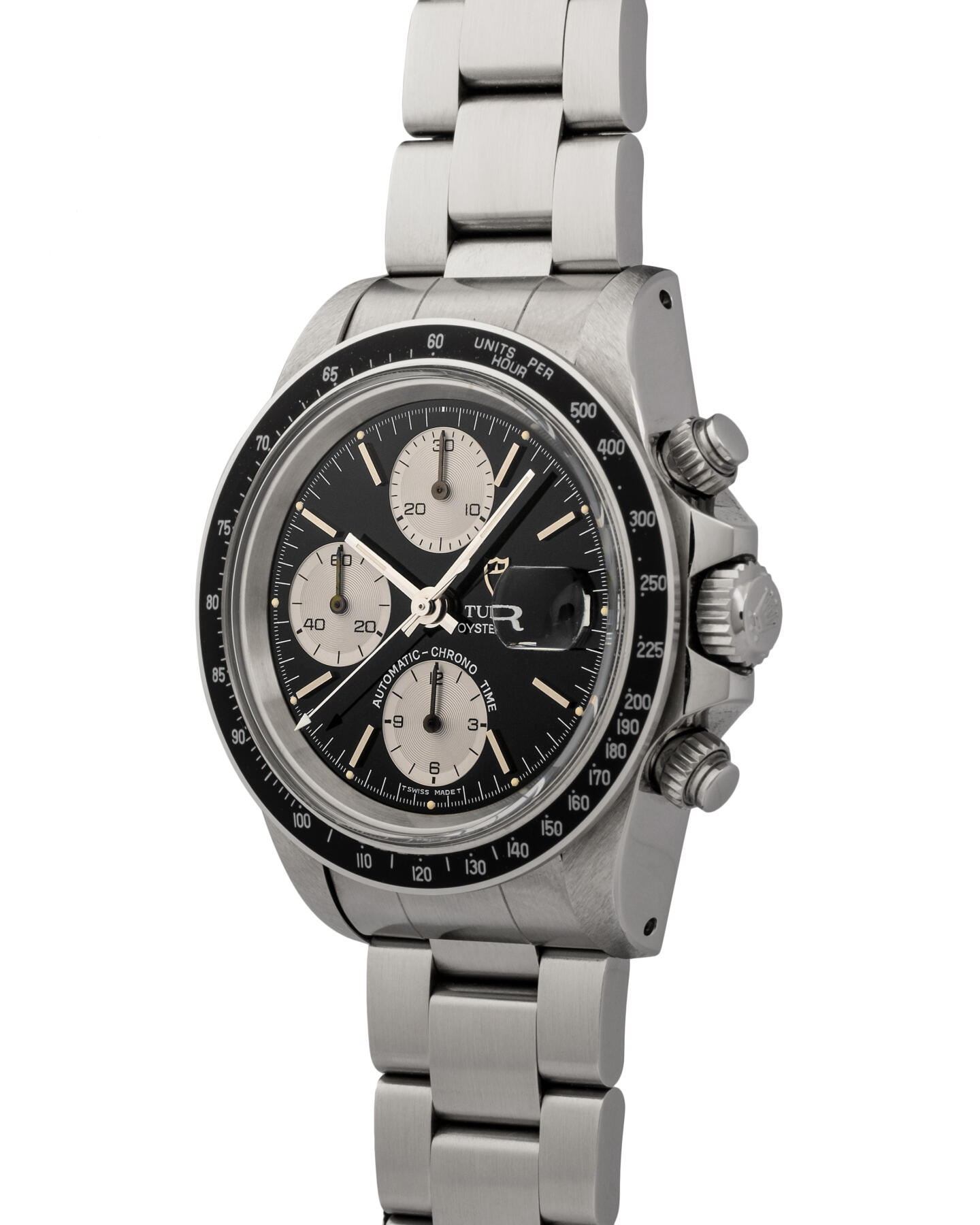
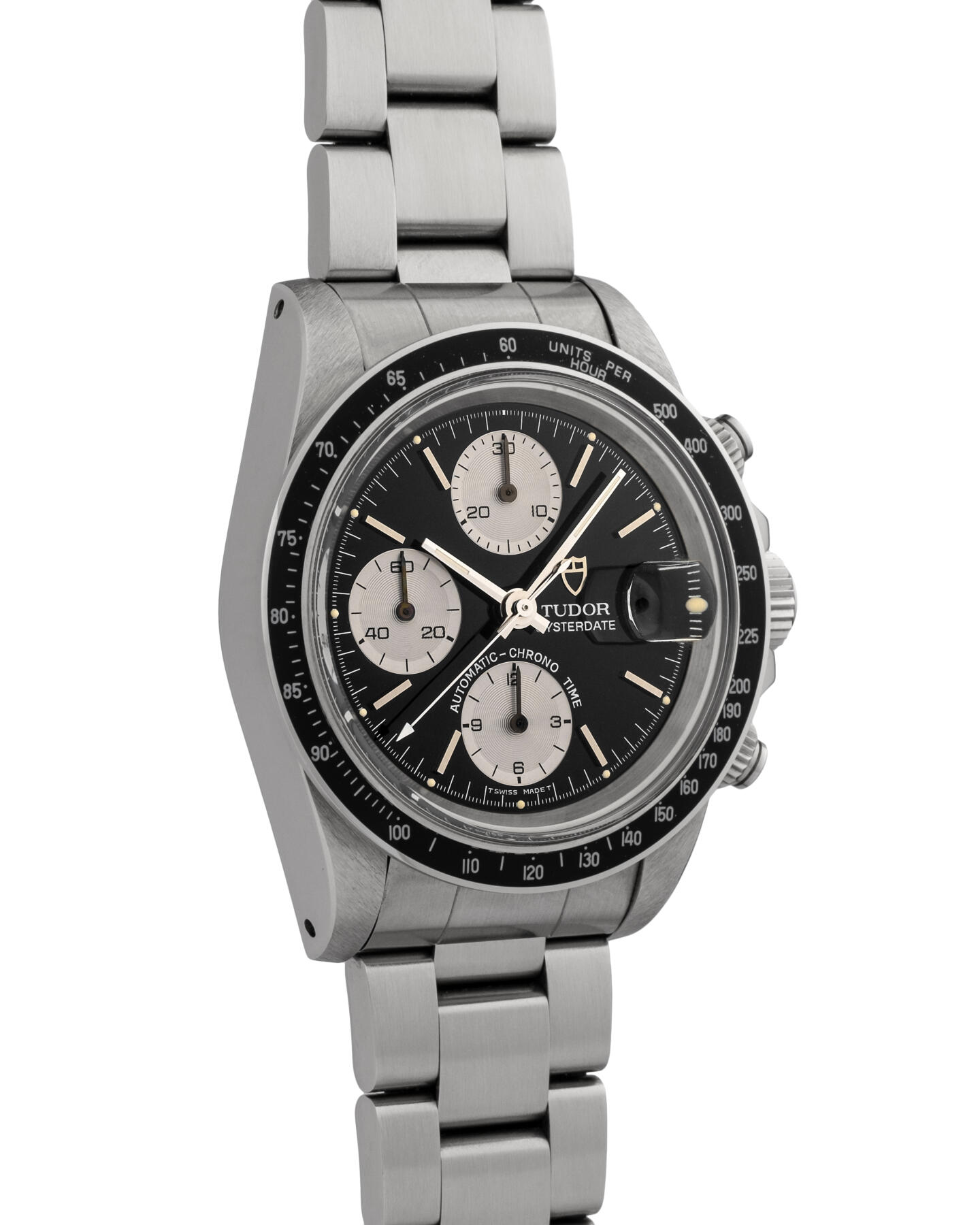



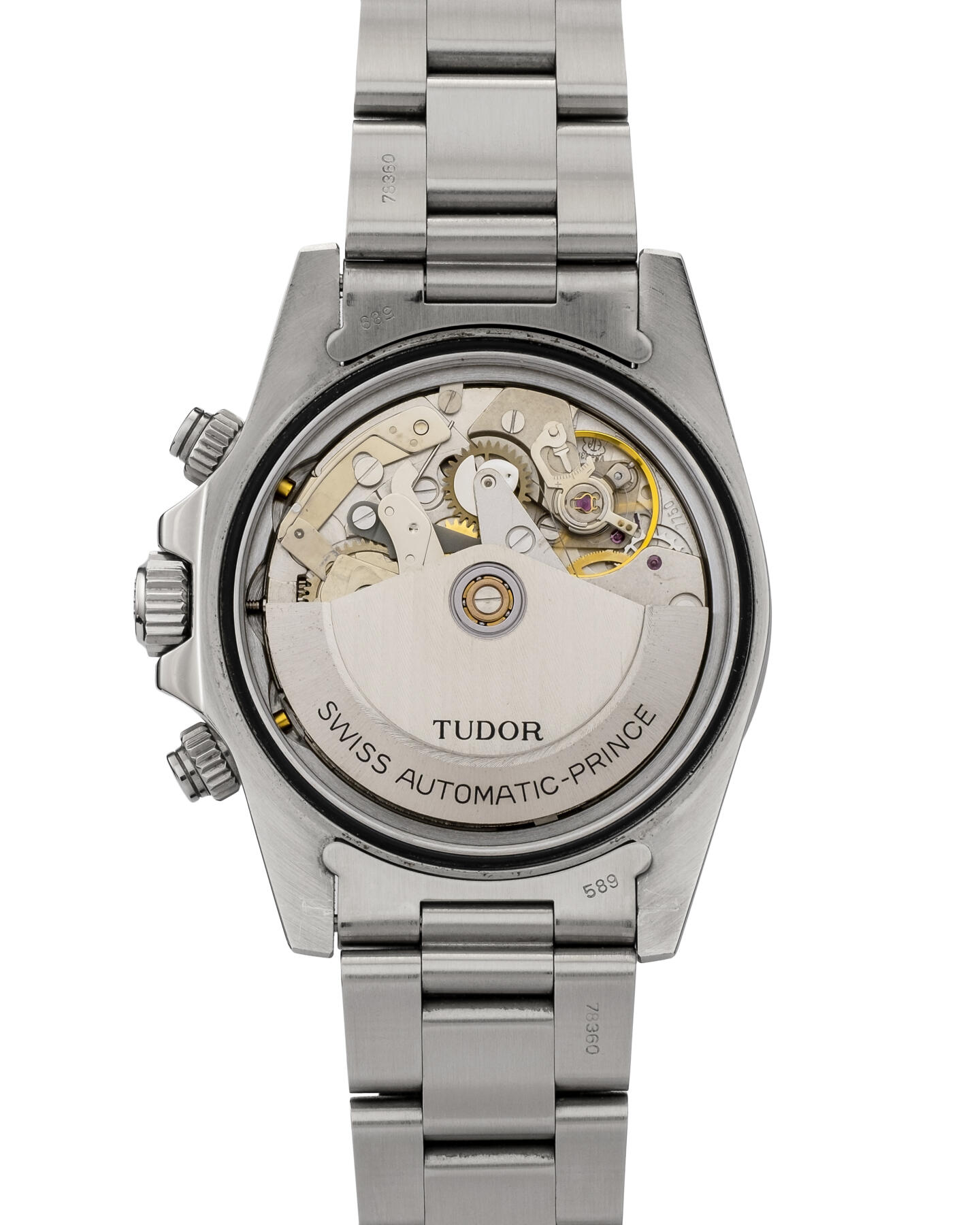
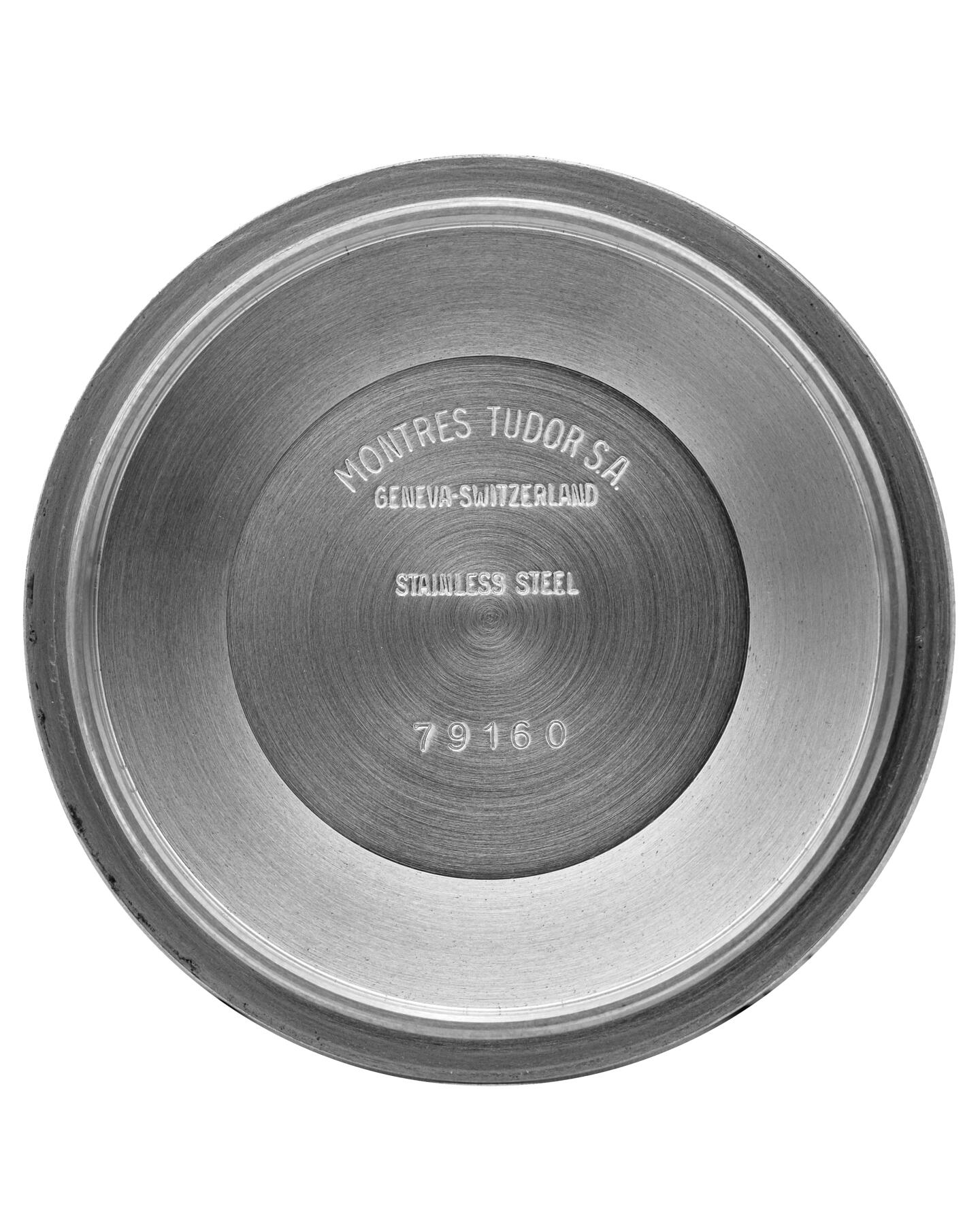


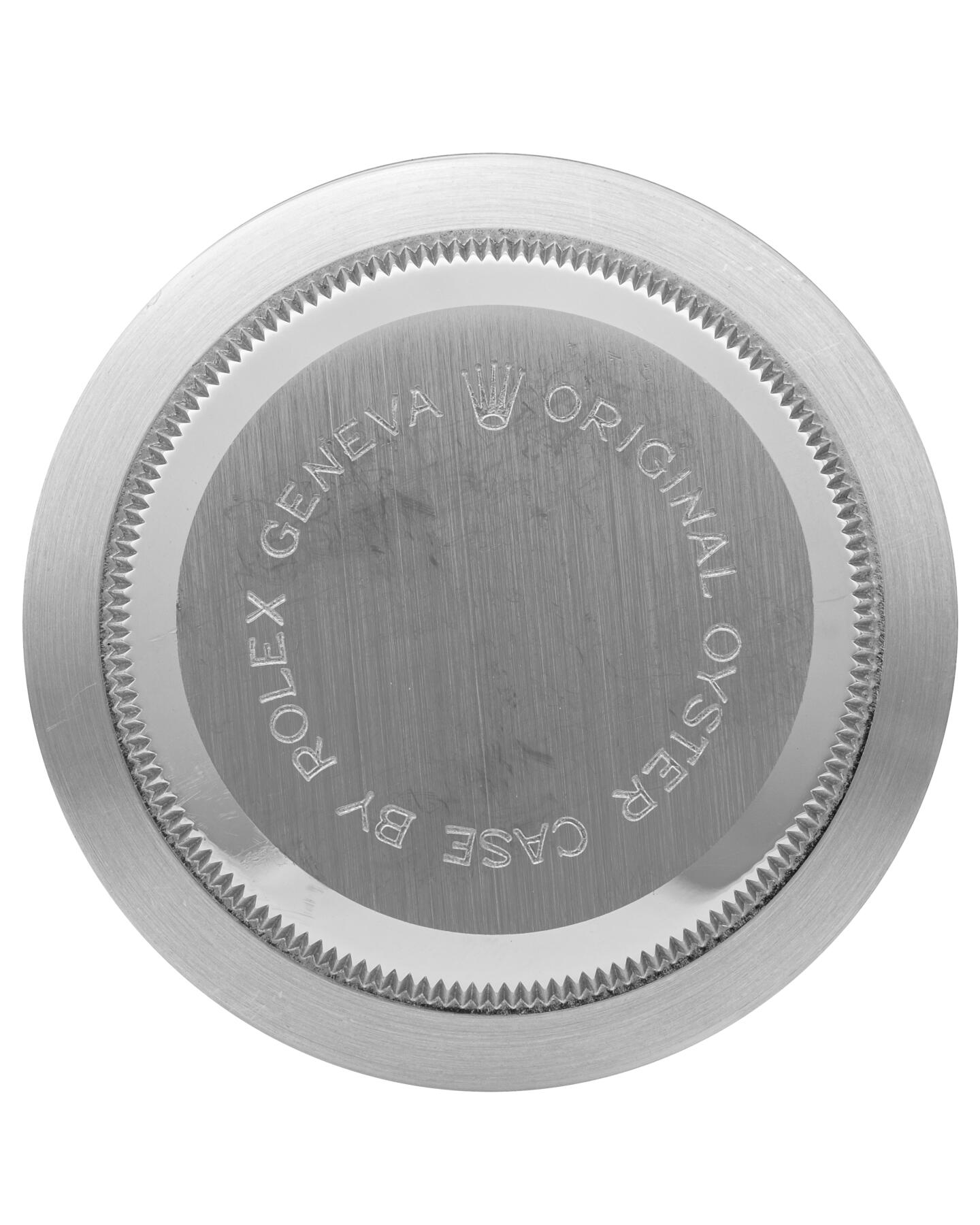

Testing 123…
It would seem, however, that Tudor had not given up on the idea of using striking colours on the dials. Recently, a number of prototype dials have been discovered for the 79100 series watches. All these dials are silver with eye-catching sub dial colours such as blue, orange, pink and green.

Tudor Big Block reference 79180 dating to 1990 sold at Christie's Geneva in November 2019 for CHF20,000, over three times the low estimate. Why? The dial, even though in poor condition, was a rare pink so-called prototype or test dial.
In a collecting world where ‘plexy-era’ Rolex and Tudor watches are highly coveted, the Big Block offers collectors an opportunity to own an Oyster chronograph at a very reasonable price point. In comparison, the plastic glass vintage Daytonas are actually quite diminutive with a 36mm case and 19mm lug width, against the 40mm/20mm Big Block. This gives the watch presence on the wrist that feels contemporary yet looks very classic in form. For a number of years now there has been a lot of interest in the earlier two-register chronos, which have attained the ‘grail-watch’ status amongst Rolex and Tudor collectors, especially the ‘Homeplate’ chrono from 1970. In my view, the three register chronos are yet to really ‘take off’. They are an important chapter in the Tudor story as a demonstration of both Tudor’s freedom to experiment with more experimental design and also the first automatic chronograph out of the Rolex camp.

79160 with black dial
| Photo | Ross Povey |
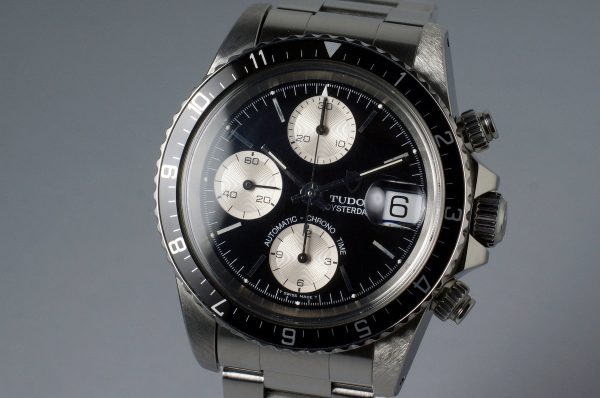
79170 with black dial
| Photo | HQ Milton |
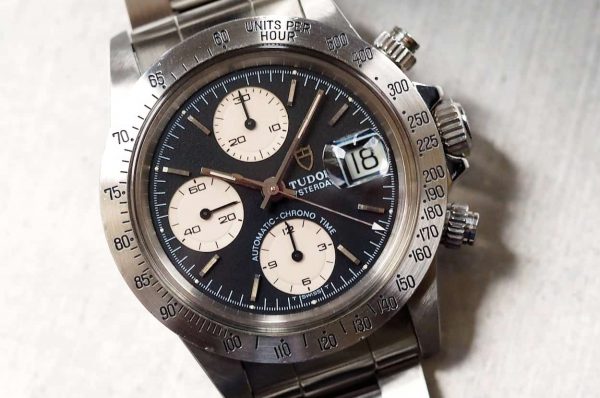
79180 with black dial
| Photo | Fratello Watches |